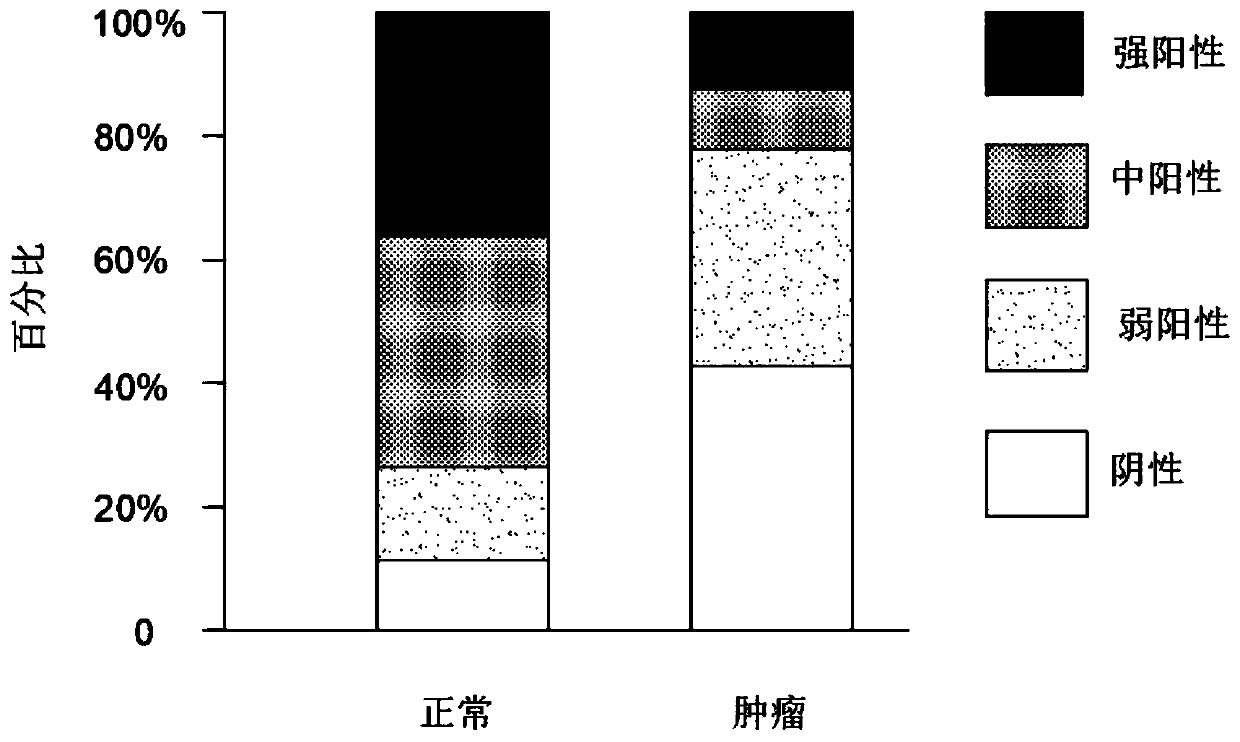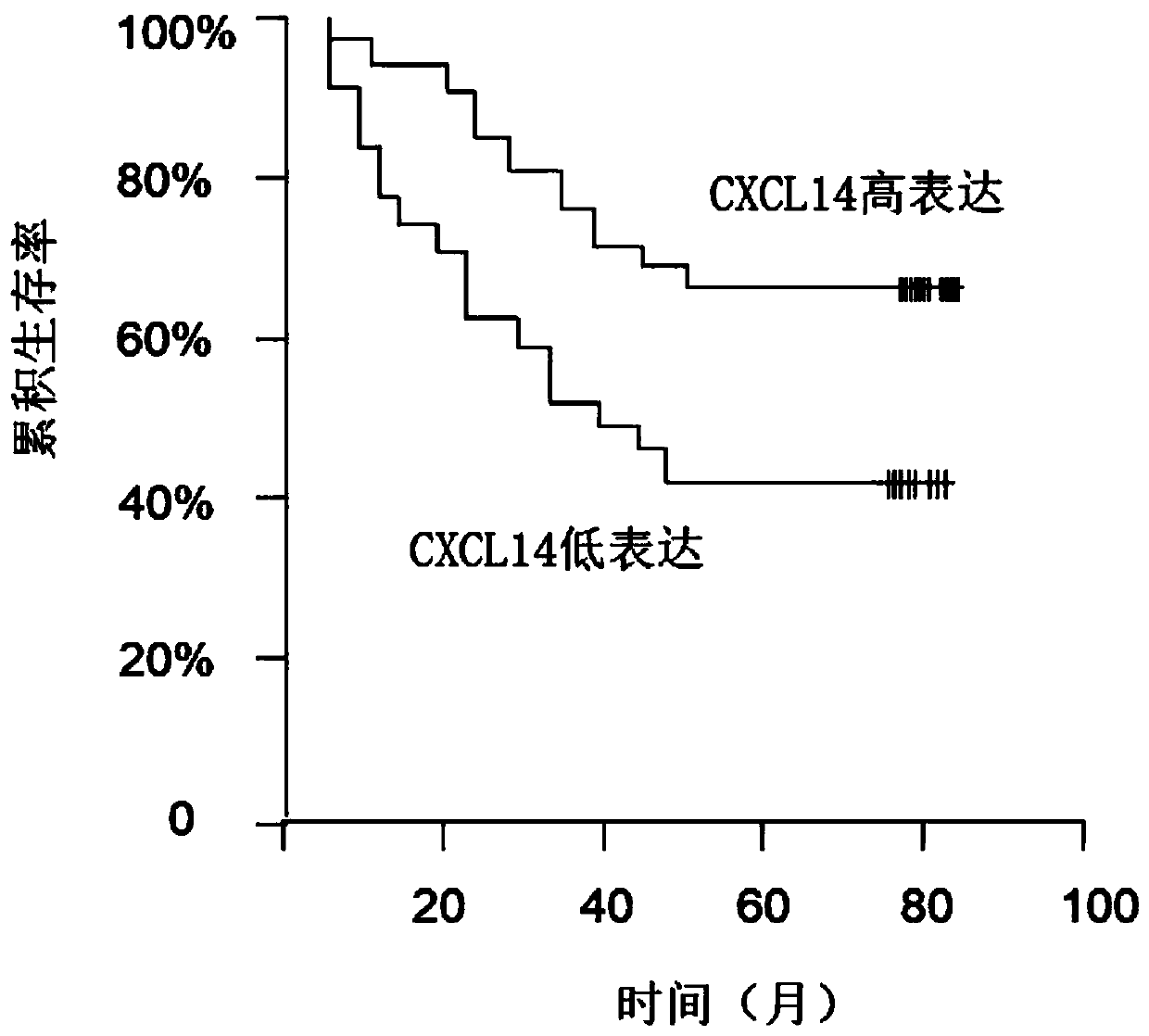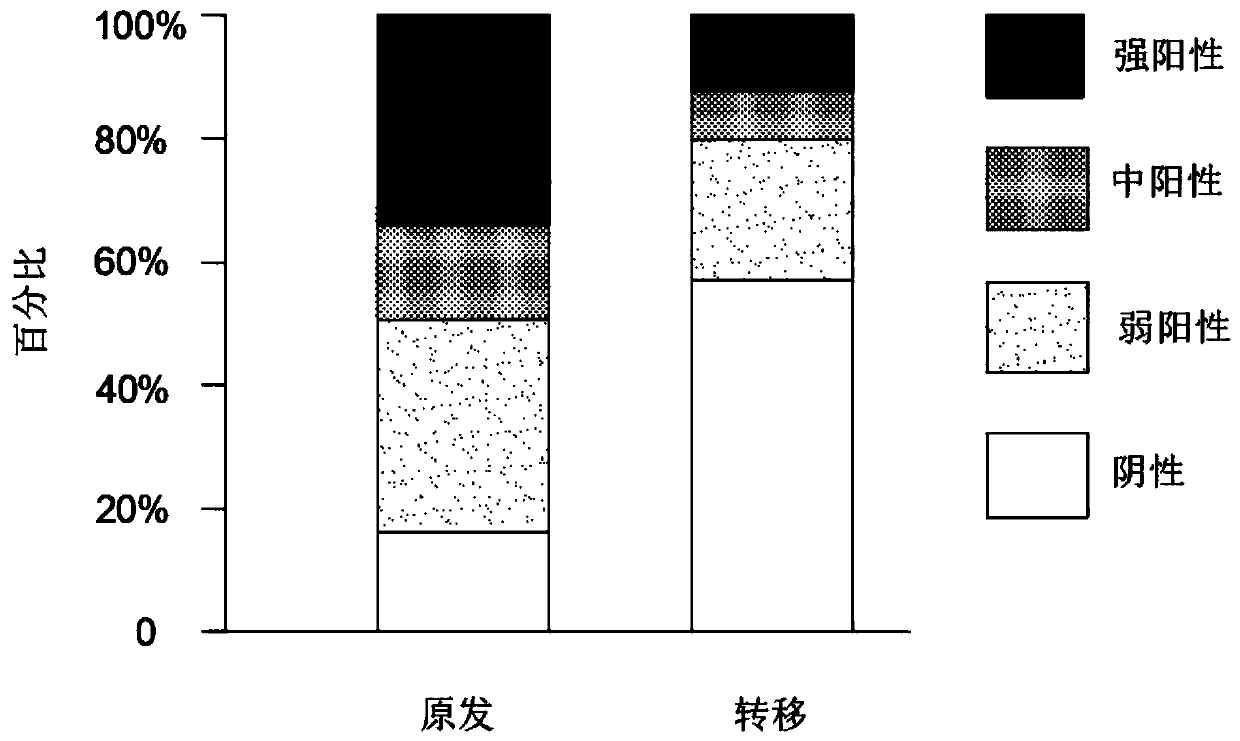Application of chemokine CXCL14 in predicting prognosis of colon cancer
A technology for colon cancer and colorectal cancer, which is applied in the preparation of test samples, measurement devices, and color/spectral characteristics measurement, etc. levels, improving treatment outcomes, and improving quality of life
- Summary
- Abstract
- Description
- Claims
- Application Information
AI Technical Summary
Problems solved by technology
Method used
Image
Examples
Embodiment 1
[0046] A method for using a diagnostic kit for detecting the chemokine CXCL14 for predicting the prognosis of colorectal cancer, comprising the following steps:
[0047] (1) The clinical tissue was embedded in paraffin and then serially sectioned, with a thickness of 2 μm;
[0048](2) Place the cut slices in a constant temperature oven at 55°C for 2h;
[0049] (3) dewaxing is carried out to the above-mentioned dried section;
[0050] (4) soaking the dewaxed tissue sections with PBS solution;
[0051] (5) Add 50ul of endogenous peroxidase blocking agent to each section and incubate at room temperature for 20 minutes;
[0052] (6) Rinse or soak in PBS for 3×3min;
[0053] (7) Add 50ul of non-immune animal serum to each tissue section to block non-specific binding;
[0054] (8) Dry the serum, add the diluted primary antibody rabbit-derived anti-CXCL14 polyclonal antibody to each slice, and keep it at 4°C overnight;
[0055] (9) Rinse or soak in PBS for 3×3min;
[0056] (10)...
Embodiment 2
[0064] The preparation of tissue microarray (TMA) includes the following steps:
[0065] (1) Make a mold wax block with a size of 45mm × 20mm, punch holes with a spacing of 0.1mm and a diameter of 0.6mm on the mold wax block, and each hole is accurately positioned with coordinates.
[0066] (2) According to the observation of HE staining, the sample paraffin block was selected and marked on the HE section and the corresponding paraffin tissue block, respectively, and the site of the sampling tissue was punctured with a stainless steel needle with an inner diameter of 0.6 mm, with a depth of 2 to 3 mm, and it was fixed on the Inside the hole in the mold wax block.
[0067] (3) The mold wax block was sliced with a thickness of 4 μm, and it was applied to a solid phase carrier such as a glass slide or nylon membrane to make a tissue microarray, and then immunohistochemical staining could be performed.
Embodiment 3
[0069] The correlation between the expression of chemokine CXCL14 protein and the metastasis and survival rate of colorectal cancer
[0070] 1. Tissue Microarray
[0071] The preparation of tissue microarray was carried out with reference to Example 2.
[0072] Tissue microarrays (TMA) of 50 colorectal cancer tissues and 40 paracancerous tissues were prepared for immunohistochemical analysis of CXCL14 to determine the correlation of CXCL14 protein expression level with prognosis.
[0073] Another tissue microarray (TMA) of 50 primary colorectal cancer lesions and their corresponding lymph node metastases was prepared for immunohistochemical analysis of CXCL14 to compare the differences in CXCL14 protein expression between primary and metastatic lesions, and then determine Correlation of CXCL14 protein expression level with tumor metastasis.
[0074] 2. Immunohistochemistry
[0075] Referring to the method of Example 1, step (1) was replaced with the above-mentioned tissue m...
PUM
| Property | Measurement | Unit |
|---|---|---|
| thickness | aaaaa | aaaaa |
Abstract
Description
Claims
Application Information
 Login to View More
Login to View More - R&D
- Intellectual Property
- Life Sciences
- Materials
- Tech Scout
- Unparalleled Data Quality
- Higher Quality Content
- 60% Fewer Hallucinations
Browse by: Latest US Patents, China's latest patents, Technical Efficacy Thesaurus, Application Domain, Technology Topic, Popular Technical Reports.
© 2025 PatSnap. All rights reserved.Legal|Privacy policy|Modern Slavery Act Transparency Statement|Sitemap|About US| Contact US: help@patsnap.com



